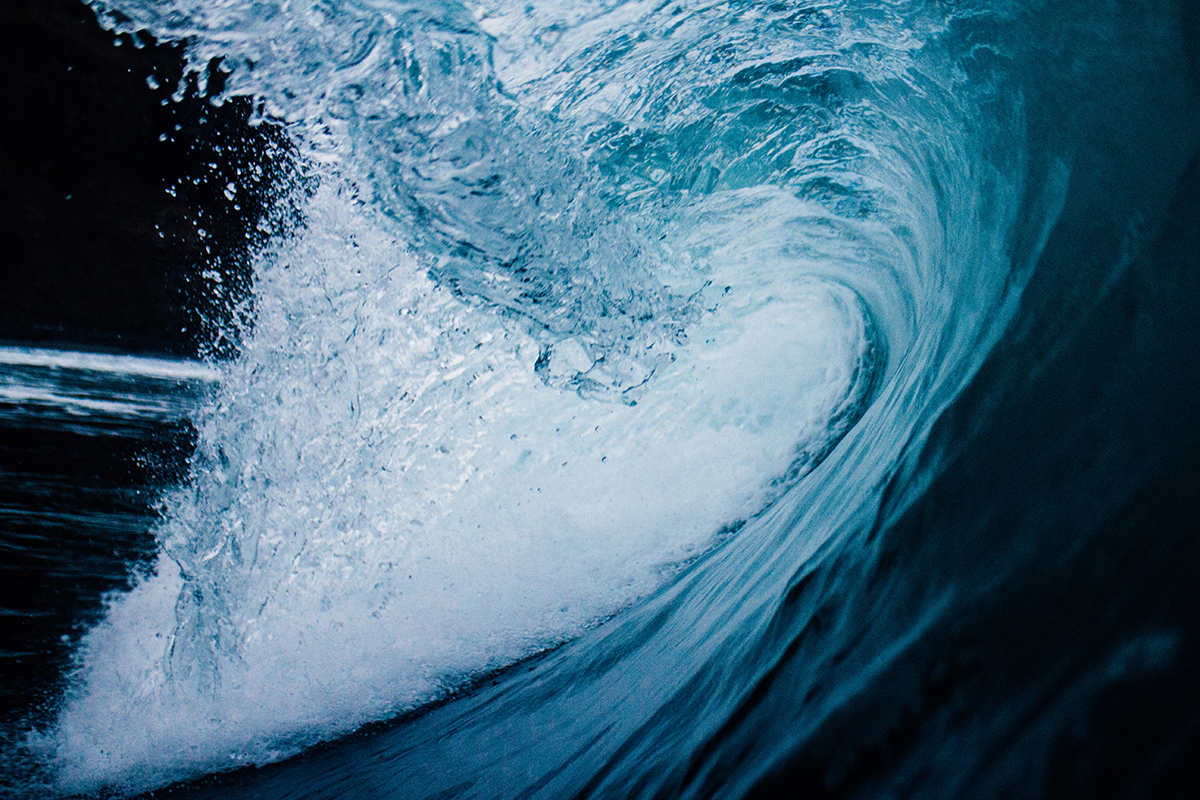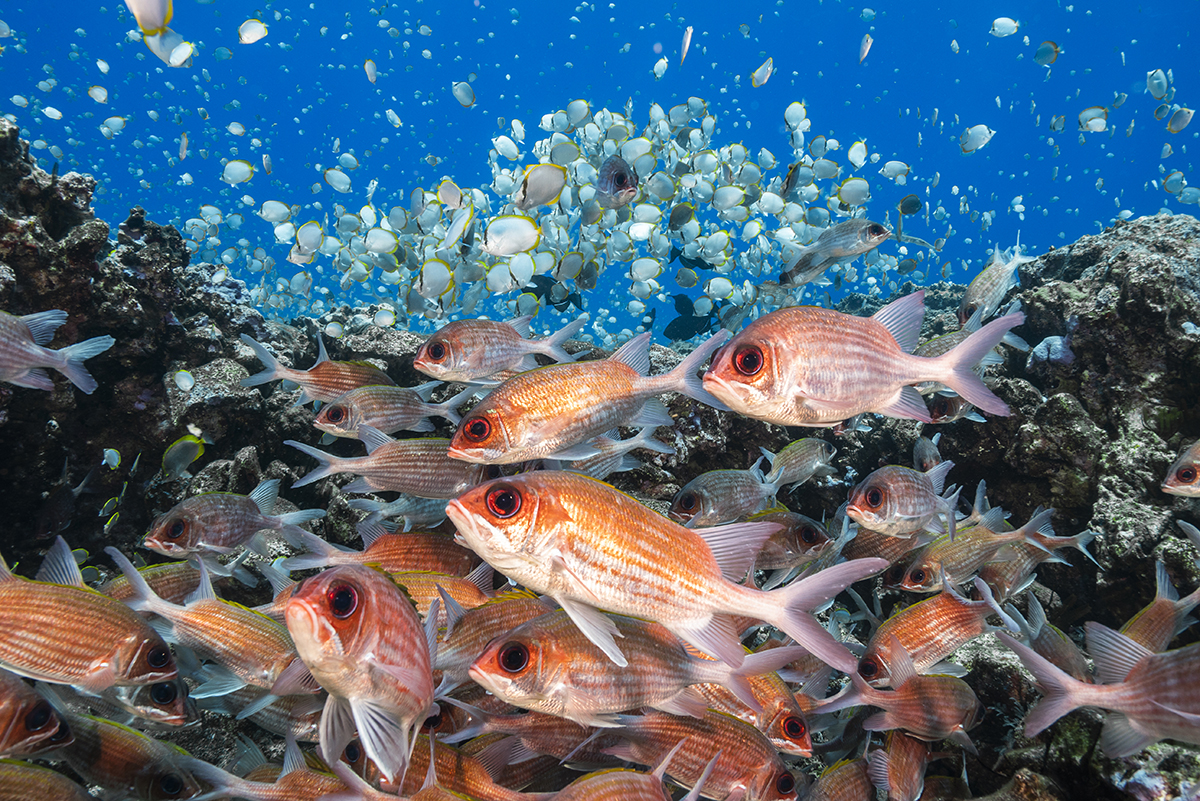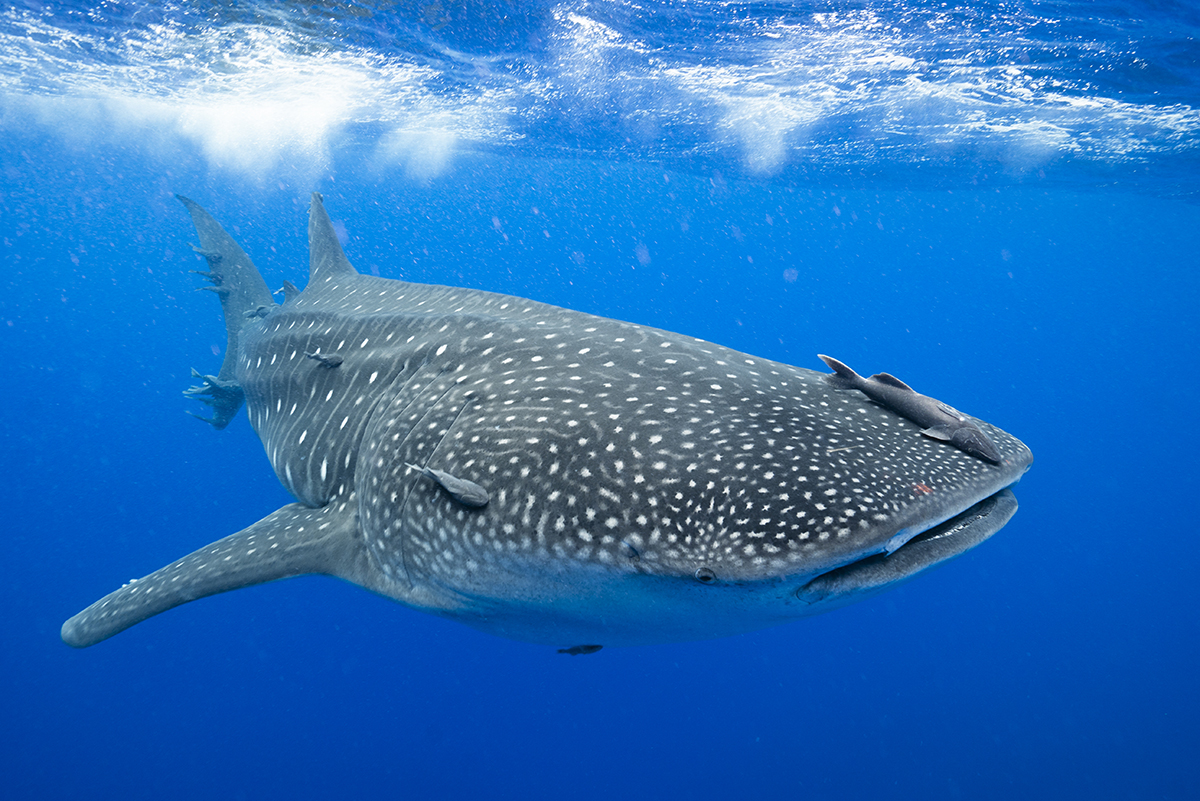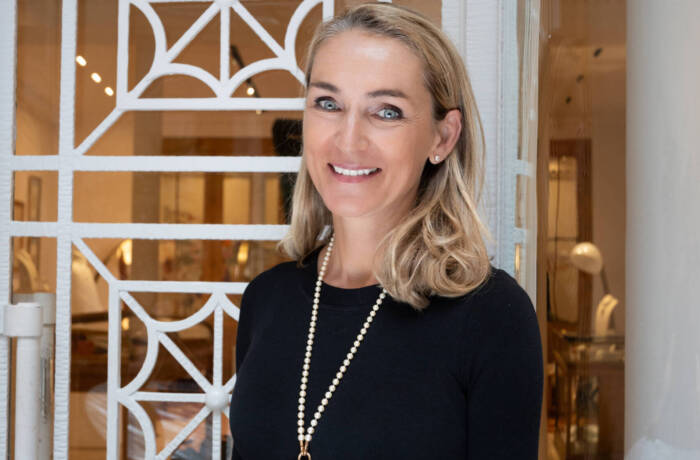
Photo by Tim Marshall
Ahead of World Ocean Day, LUX speaks to Jean-Baptiste Jouffray, researcher at the Stockholm Resilience Centre, about his work on the Anthropocene, the blue acceleration, and why saving our oceans must be a collaborative effort

Jean-Baptiste Jouffray
LUX: The use of the word Anthropocene has only become widespread in the scientific community fairly recently, but it’s now a key focus of your work. Why is this terminology important?
Jean Baptiste Jouffray: The Anthropocene is often described as this new period or epoch or era where humans have become a dominant force of planetary change, with profound impact on, not just the climate system, but also all sorts of ecosystems and the functioning of the earth’s system. It’s essential to my work as an analytical framework. It’s more than just entering a discussion about whether it’s a geological epoch, which means agreeing when it starts exactly. Does it start after WW2 when we start using radioactivity? Does it start exactly 2000 years ago? Does it start 10,000 years ago when we started to have agriculture and other things? I think it is more important to use it as an analytical framework, rather than focusing on those types of questions. It’s often characterised by unprecedented speed, scale and connectivity across sectors, across people, across regions, across socioeconomic contexts. What do these things mean? How do we make sure we move forward in a more sustainable and equitable way? I think that’s the power of the Anthropocene, in my work at least. Others focus more on the geological aspect of it and the question of whether it is the next geological era after the Holocene or not.
LUX: You say that in your work you use inter- and transdisciplinary approaches, which is a method which is becoming more prevalent across STEM fields. Would you say that this is particularly important when researching sustainability?
JJ: Absolutely. That’s because I think sustainability is a different kind of science. It has been described as a science for which the real test of success will be implementing its knowledge to solve the big societal challenges. So, in that sense, I think sustainability science is about translating knowledge into action. It’s not just about creating knowledge for the sake of it, but really creating knowledge, and ideally co-creating knowledge amongst multiple stakeholders to solve the problems we’re facing. Sustainable science is often said to be problem-driven and solution-oriented, and in that sense you need more than just one discipline. You have to synthesise knowledge across academic disciplines.
Beyond academia, you also need to engage with different societal actors, be it governments, NGOs or the private sector, for instance. It’s true that the coproduction of knowledge should also lead to co-operation in the designing of solutions and their implementation. If it’s just a top down thing, scientists in their ivory tower and the rest of the world, it’s not going to work.

Photo by Ivan bandura
LUX: You have been involved with SeaBOS, the organisation involved in creating a dialogue between corporations and experts in sustainability. Obviously businesses are becoming more engaged with science, but how are they really doing this and do you think we have a long way to go?
JJ: Yes we do. But it’s good that we have started somewhere. I think SeaBOS is an example of what I just described, it’s scientists coming together with businesses and trying to co-produce knowledge, agreeing on what the challenges are and discussing what the possible solutions could be. It’s really that kind of science-business dialogue that has been a really fascinating experience. I think this is because, ultimately, it is a dance between those two entities; you have to compromise somewhere. For example, scientists usually like to see more results or ambitious time goals, and then the business side also have to deal with the reality of their own operations and what is feasible. You have to adapt to the other side, and this is a really exciting prospect.
We need collective and collaborative action across the whole supply chain. It’s not just miscellaneous companies and scientists: we need the financiers involved, we need governments to set up the right regulatory landscapes to incentivise better practices, and consumers need to be aware of it as well. So it is really that collective and collaborative approach that can accelerate sustainability.
Follow LUX on Instagram: luxthemagazine
LUX: Is it realistic to expect consumers to understand the science and the environmental impacts behind their purchases? Do they need to?
JJ: They need to understand it in order to add another dimension of pressure in what I just described in terms of collaborative and collective action. I think consumers have a role to play, but whether they should have the sole responsibility, I don’t think so. In an ideal world, as a consumer you would enter a grocery store and only have sustainable products to choose from, you wouldn’t have to choose between a sustainable version and an unsustainable version, often with a price premium for the sustainable one, which brings more difficulties.
I think for this question it is a yes and no. Yes, they do have a role to play, and we’ve seen it in boycott or buycott campaigns which have had a really strong influence on industry. One of the most widespread mechanisms used by companies is certification or labelling of products, and we do see that it has an impact, but also limits. If you do a survey and show maybe half a dozen labels to a random, average consumer or customer in the grocery store, they will recognise some that do not exist. This was actually done in the context of seafood when consumers were presented with labels; they were recognising some of the legit ones as well as some that were totally made up.

Photo by Ivan Bandura
LUX: How do you see the relationship between science and governmental policy and what role do you think researchers should play in shaping policy and decisions?
JJ: Speaking from my own field of sustainability science I think scientists have a really big role to play. This goes back to this example of staying in your ivory tower and publishing papers and then moving onto the next one, without really caring what happens next. I think that model of operating – again, for sustainability science, I want to make that distinction because I think there are a lot of applied or fundamental sciences that are different and that we need for the sake of them. But in the context of sustainability, it has to operate with the ambition to translate that knowledge into action, and that means communicating it to different stakeholders, like the private sector, but certainly to governments so that policy decisions are evidence based. That’s really what the IPCC is about in the context of climate change.
On the other hand, however, this doesn’t mean we always need to wait for science to act. I think there is a double-edged sword to big organisations like the IPCC, and that’s why several of the scientists who have been engaged for years in the IPCC and various reports, have publicly said this will be their last report. They will not contribute anymore because it gives the impression that we need to wait for the next report to have more information to act upon, when in fact we have all of the information we need to know in terms of the urgency of the situation and to know the solution to it, and therefore we need to act.
LUX: Can you explain what is meant by ‘blue acceleration’ and what this means for our oceans going forwards?
JJ: The term blue acceleration is something we coined very much in the spirit of the Great Acceleration idea and concept by Will Steffen, who recently passed away and was a giant of science. He used the term of the Great Acceleration to describe an exponential growth. The growth usually starts in the Industrial Revolution, but it really takes off in the mid-50s after WW2. You see across economic and socio environmental variables with population, GDP, deforestation, CO2 emissions across the board, you see that really rapid, exponential growth. Of course, it has its consequences, and it’s often one of the most iconic illustrations of the Anthropocene.
If we go back to the notion of the Anthropocene, how do you visualise, how do you embody the Anthropocene? It could be with those graphs of the Great Acceleration and our work focused on how that relates to the ocean specifically. If we take that lens and look at what happens in the ocean, it looks very similar. So that’s the interesting parallel, that’s why we called it the blue acceleration, because you see a rapid increase across a wide range of sectors. There are multiple increasing uses of the ocean for food, for energy, for materials, and for space as well.
If you look at marine aquaculture or agriculture for instance, it’s one of the fastest food production sectors in the world. If you look at shipping, the volume of goods transported by containers has quadrupled over the past 20 years and more than 1,000,000km of submarine cables have been laid on the sea bed. Undersea cables account for 99% of all international telecommunications that are happening in the world; it’s cheaper, more reliable, faster and safer than satellites.
Offshore wind is another example, one of the most promising marine renewable energies and the only one so far to have been scaled up commercially. It has increased 500 fold in the past 20 years. What the blue acceleration is, in essence, is a new phase of humanity’s relationship with the ocean that is characterised by this rapid increase at the onset of the 21st century, so very recently.

Photo by Danny Copeland
LUX: Can you tell us about the Ocean 100 project?
JJ: The Ocean 100 really speaks to the blue acceleration. If you acknowledge that acceleration and that growth across all sectors, you see that there is a scramble for the sea. Then the question is, who is racing? Or, if you look at it another way, who is left behind?
The Ocean 100 is looking at the big companies, particularly in the private sector, who are involved in ocean based industries. What you see is that a handful of companies often control a really large market share of the sector. For instance, the top ten oil and gas companies in terms of offshore production are responsible for more than half of total offshore production. If you look at the 10 largest companies in cruise tourism, they are 93% of the global market share, so really highly concentrated in terms of revenues. We look at those companies within sectors, and we look at it across sectors just by revenues, to see who are the largest of the largest across ocean industries. That’s the Ocean 100. The 100 largest companies by revenues.
What’s striking is that 47 out of the 100 are oil and gas companies, and 9 of the top 10. It’s a reality check because there is a mismatch between the aspiration of a blue economy, a sustainable and equitable ocean economy, and the reality of today’s extraction where oil and gas is by far the largest industry in the ocean today. The project identified who they were and in a subsequent effort, tried to engage in dialogue. So similar to what SeaBOS has managed to do within the seafood industry, they engaged in dialogue with some of those industries to see what they could do together across industries that they couldn’t do alone within their own sector.
Read more: Markus Müller on the links between the ocean and the economy
LUX: You recently completed your PhD. What is next for you?
JJ: I’ll keep doing it, I’ll keep going at it! I’m just starting a position at the Stanford Center for Ocean Solution, whose mission is to translate knowledge into impact across a series of initiatives. I’m very keen to keep looking at the ocean economy and trying to look at how we make sure it becomes a blue economy. It’s often used synonymously; people think of the blue economy as the ocean economy. I like to make a distinction. The blue economy right now is very aspirational, it would be a sustainable and equitable version of the ocean economy. But the reality that we’re dealing with today is very much a dark blue ocean economy.
I will be looking at the ocean economy, trying to make sense of it, increasing transparency, but not just for the sake of transparency. Transparency on its own is not enough. What you need is accountability as well. Trying to identify the levels of accountability in ocean economic sectors and leverage points to change. Who can set the right incentives? I believe the financial sector has really strong power to create incentives for industry, as do governments. You need a regulatory landscape. It’s not going to happen out of altruism as much as we could wish for this, it’s not how we operate. You need the regulation to be in place to incentivise better practices, and we’re going back to collective action. I think diving into that is something that I’m really keen on.

Photo by Danny Copeland
LUX: In 10 years’ time what changes do you hope to see in the world as a result of your research and the initiatives that you’ve worked on?
JJ: In 10 years’ time we’re past 2030, so we’ve either delivered or not on the Sustainable Development Agenda. So far it doesn’t look that good to be entirely honest, I don’t know if we are on track for delivering.
But I hope we will have got to a point where governments have been bold enough to set in motion the policies that will enable change. We can’t just stick to business as usual with a few incremental changes here and there, or a couple of long term targets that make everyone feel good.
More specifically, when it comes to the financial sector, I really like to think of financiers as either enablers or gatekeepers in terms of their potential influence. I would like to see them enable capital to flow towards sustainable activities. What’s striking in the ocean domain is that SDG 14 is the least financed goal of all of them. The SDG 14, life below water, the ocean SDG, is the least financed over the past ten years. Only 1% of the total value of the ocean economy has been invested into sustainable activity. In 10 years’ time I would hope they do more to fill that gap and enable more sustainable investment.
At the same time, regardless of that ocean finance gap, you have that blue acceleration that is exponentially increasing. This means that capital is going to those sectors, one way or another. That’s where I think of financiers as gatekeepers. Ideally financiers would take the sustainability criteria into consideration in their financial decision. It’s not the norm, but I hope it will be in 10 years’ time. Loans by default should be sustainability linked instead of the other way around, because suddenly that means companies have an incentive, a very tangible incentive to perform from a sustainability perspective.
Find out more: stockholmresilience.org/jouffray








